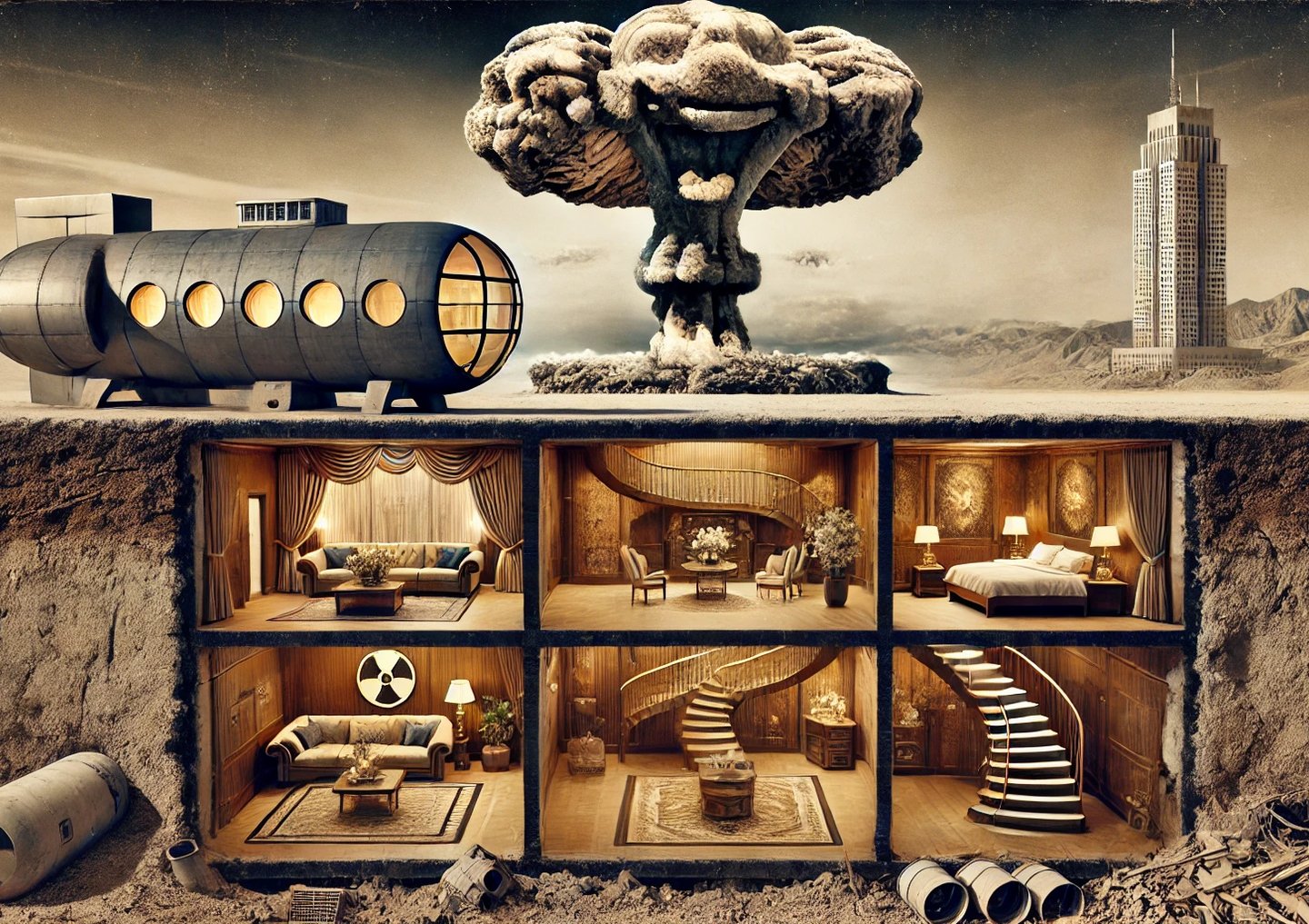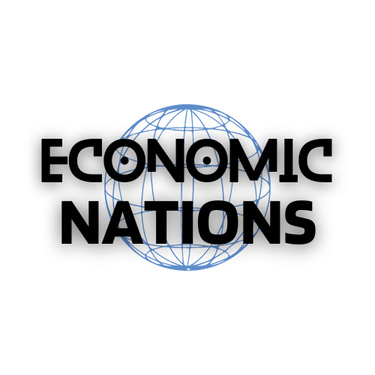Fearonomics: How Fear Powers the Modern Economy
NEW AGE SECURITY
12/20/20244 min read


The Economy Council


PIC: ChatGPT
Fear is no longer just a primal survival instinct—it has become an invisible currency fueling the engines of the global economy. From the rise of luxury nuclear bunkers to the dark world of illicit nuclear trade, fear is shaping markets, driving innovation, and redefining human priorities. But beyond its obvious effects, the fear economy operates on a paradox: it sells protection while deepening the very anxieties it promises to quell.
The Business of Catastrophe
The modern world has commodified fear, turning our worst nightmares into billion-dollar industries. Nowhere is this more apparent than in the booming market for nuclear bunkers. These aren't the cramped, makeshift shelters of the Cold War; today's bunkers are subterranean palaces. Companies like Atlas Survival Shelters cater to a growing clientele who seek refuge from everything from nuclear fallout to societal collapse. The average price of $500,000 for a luxury bunker buys peace of mind, but it also highlights a growing wealth divide in disaster preparedness.
Yet, this burgeoning industry rests on a troubling contradiction: the very product it sells might not work as advertised. Experts, including nuclear safety specialists, have warned that bunkers provide little actual protection against the long-term impacts of nuclear war. The fallout, radioactive contamination, and cascading societal collapse following a nuclear event render bunkers a psychological crutch rather than a genuine survival solution.
In essence, the bunker industry thrives not on efficacy but on perception. It offers consumers the illusion of control in an uncontrollable world. This paradox—selling flawed solutions to irrational fears—is central to the economics of catastrophe.
Fear as an Economic Multiplier
Fear-based spending ripples across industries. It’s not just bunkers but a cascade of related markets—emergency food supplies, survival kits, private security, and life insurance policies—benefiting from a culture of catastrophe. The COVID-19 pandemic laid bare how industries can pivot to monetize fear. Masks, sanitizers, and personal protective equipment transformed overnight into necessities, driving profits sky-high.
The nuclear fear market, however, is uniquely positioned. Unlike a virus or an economic downturn, nuclear annihilation is final. This existential dread pushes consumers to invest in ultimate fallback plans, amplifying the multiplier effect of fear across industries.
Fearonomics in Politics and Policy
Fear doesn’t just sell products—it shapes policies and politics. Governments spend vast sums on nuclear arsenals and defense systems, justified by the specter of an existential threat. In 2023, global nuclear weapons spending surged to $91.4 billion. Ironically, the fear that drives citizens to seek safety in bunkers also drives nations to escalate arms races, deepening the cycle of fear.
However, there’s a subtler layer to this: fear thrives in the shadows. Governments actively manage public perception, downplaying nuclear risks while quietly preparing for worst-case scenarios. FEMA’s understated messaging, like encouraging citizens to shelter in basements, contrasts starkly with trillion-dollar defense budgets. This disconnect feeds the fear economy, keeping citizens anxious yet uninformed enough to seek private solutions.
The Dark Economics of Illicit Fear
What happens when fear isn’t just monetized but weaponized? The illicit nuclear market epitomizes this darker side of fearonomics. Here, fear isn’t a byproduct; it’s the commodity itself. Rogue actors trade in nuclear materials, exploiting the vulnerabilities of nations desperate for deterrence or domination.
The story of Abdul Qadeer Khan, who turned nuclear expertise into a black-market empire, reveals an unsettling truth: fear can be outsourced. Khan’s “nuclear entrepreneurship” transformed his knowledge into a global threat, selling nuclear capabilities to nations like Iran and North Korea. In a sense, he monetized the fear of nuclear inferiority, creating a parallel fear economy that continues to operate beneath the surface of international diplomacy.
Innovation Born of Fear
While fear drives consumption and policy, it also spurs innovation. This is the unspoken silver lining of the fear economy: necessity is its constant mother. For instance, the fear of nuclear fallout has led to advancements in clean energy, as nations seek alternatives to fossil fuels to reduce geopolitical vulnerabilities tied to oil-rich regions. Similarly, advancements in cybersecurity are fueled by the fear of digital warfare.
But even innovation driven by fear is not immune to critique. Nuclear bunkers, for instance, showcase human ingenuity in creating self-sufficient living systems capable of withstanding disasters. However, the resources poured into designing these shelters often come at the cost of addressing root causes—such as diplomatic efforts to prevent nuclear conflict in the first place.
PIC: Canva
Who We Are:
The Economic Nations champions global unity through economic collaboration, focusing on sustainable growth, reducing inequalities, and enhancing global relationships for mutual prosperity and peace.
______________________________________
A Future Built on Fear
The fear economy raises a profound question: Are we innovating for safety, or are we simply rehearsing our collective demise? The current trajectory suggests a self-fulfilling prophecy. As fear drives investments in nuclear weapons, bunkers, and survival gear, it perpetuates the conditions that sustain fear itself.
The false sense of security offered by nuclear bunkers epitomizes this cycle. They mask deeper societal anxieties without addressing them, selling consumers a ticket to an apocalyptic future rather than working to avert it. In the end, the fear economy doesn’t just respond to crises; it manufactures them, feeding off the vulnerabilities it perpetuates.
Breaking the Cycle
To transcend this loop, humanity must rethink its relationship with fear. Instead of monetizing fear, could we channel it into resilience? Imagine if the ingenuity behind luxury bunkers were redirected to fostering global stability—investing in peacebuilding, addressing inequality, and combating climate change.
The fear economy thrives because it convinces people to prepare for the worst while ignoring the best solutions. By shifting focus from reaction to prevention, fear could evolve from a market force into a catalyst for meaningful change. The goal isn’t just survival but a world where fear is no longer the most profitable currency.
Contacts
enquiry@economicnations.org
(xx) 98-11-937-xxx (On verification)
